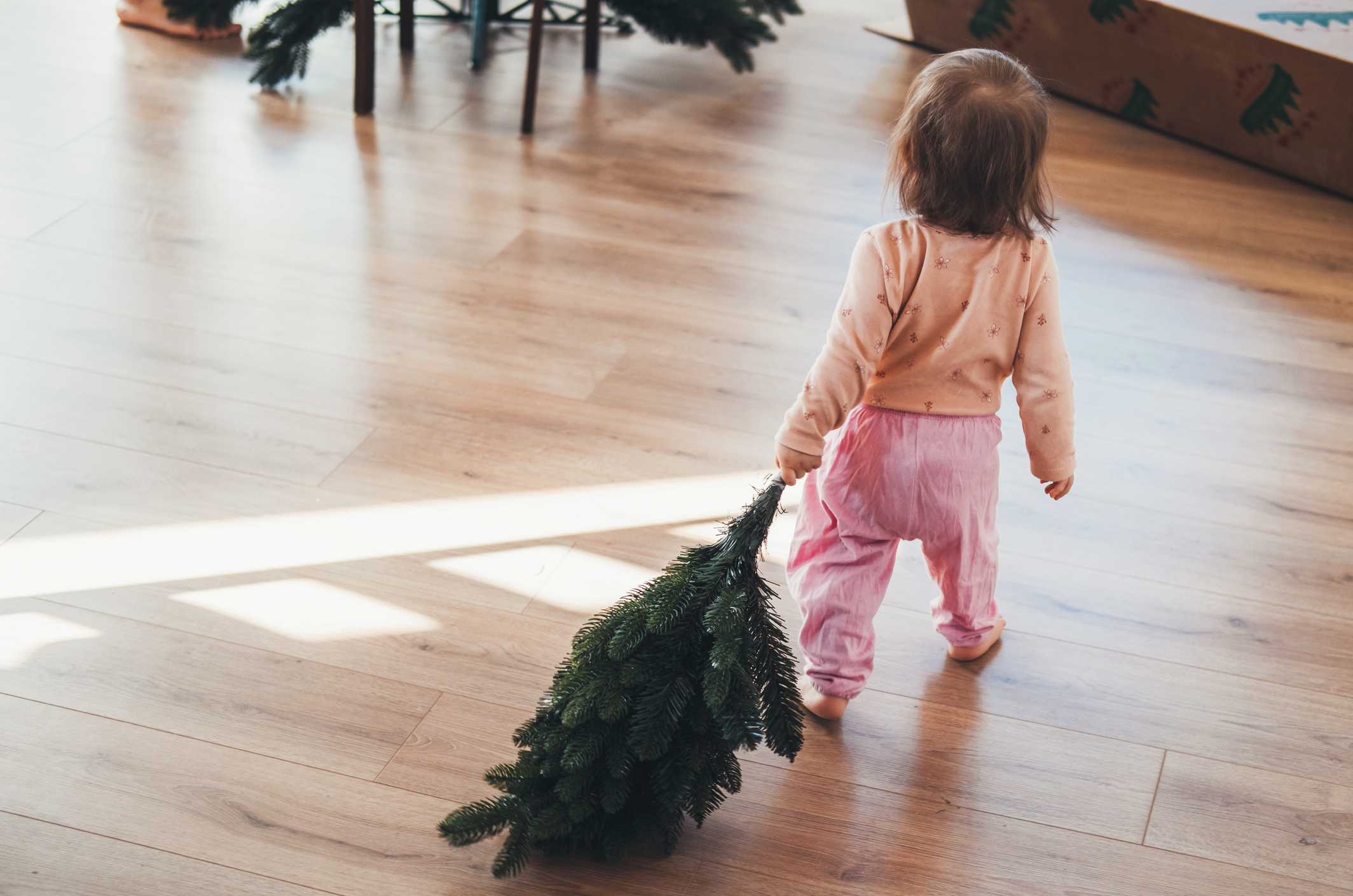When to take your Christmas tree down - the tradition explained
Here's when you should take your Christmas tree down


Selina Maycock
Once Christmas day has passed, many wonder when to take your Christmas tree down. Keep reading to find out...
The start of a New Year brings with it New Year's resolutions for kids and New Year's Day superstitions to watch out for but did you know it can also be considered bad luck if you leave your Christmas tree up too long?
Putting up the Christmas tree is one of many Christmas traditions that the whole family can enjoy, right from the moment you head to the Christmas tree farm to the day it comes down. But just like many often ask why do we have Christmas trees, there are also questions about when to take your Christmas tree down.
When to take the Christmas tree down can be a tricky call to make. Once Christmas Day is over the debate about when to remove all the festive decorations begins, with many worried that it might be bad luck to leave them up for too long. But did you know that tradition states the exact date you should take your Christmas tree down?
When to take your Christmas tree down
According to tradition, you should take your tree down on January 5th, because this is the final day of the 12 days of Christmas - otherwise known as Twelvetide. It begins on Christmas Day, December 25, and lasts right through until January 6, which is recognised as Three Kings’ Day or Epiphany.
The Church of England celebrates the Twelfth Night on 5th January and the season of Epiphany from 6th January to 2nd February. However, some mark 6th January as Twelfth Night, counting the 12 days after Christmas Day, which would suggest that you should take your tree down on January 6th instead.

But remember, this is a Christian tradition and not one you have to abide by - many families choose to take down their Christmas tree and decorations on the day that suits them best.
Parenting advice, hot topics, best buys and family finance tips delivered straight to your inbox.
Mum-of-one, Louise J tells us: "My daughter was born December 30th, so we always make sure Christmas is over and done before her birthday. Which means tinsel comes down and balloons go up on December 29th."
Other days you could take your Christmas tree down
- New Year's Eve: There is a lesser-known tradition that suggests you should take down your tree before midnight on New Year's Eve, and that leaving it up any longer may bring you bad luck in the New Year.
- 2nd February: Some Roman Catholic families choose to leave their tree up until February 2nd, according to the traditions of Candlemas, which commemorates the presentation of Jesus at the Temple.
- 6th February: The late Queen Elizabeth II would always keep her tree up until February 6th, which marks the anniversary of her father King George VI's death.
Is it bad luck to take the Christmas tree down early?
Taking your Christmas tree and decorations early is not considered bad luck, meaning you can feel safe leaving your tree up past the traditional day of January 6th if you want to.
If you're superstitious you may want to take the tree down before midnight on New Year's Eve, as some say this is a way to avoid any bad luck in the next year.
Is it bad luck to leave the Christmas tree and decorations up?
Some consider it bad luck to leave Christmas decorations up past January 6th, a belief that dates back to when when people used to decorate their homes with ivy and holly.
The folklore says that tree spirits lived in the greenery used to decorate the homes, and making sure all the festive trimmings were taken down in the first week of the New Year would set them free.
If the decorations weren't taken down on time, it was said that it would have a bad effect on vegetation and agriculture for the next year, and that the spirits may cause mischief in the home.
"When to Take Down Your Christmas Tree?"Dr Taylor Marshall Podcast pic.twitter.com/NpXwhboAT6January 1, 2024
What to do with your tree once you've taken it down
If you've opted for a real tree, you can recycle or replant it once the festive season is over, to make sure you're disposing of it in an environmentally friendly way.
Environment minister Rebecca Pow says: "If you have a tree with its roots still attached, then replanting your Christmas tree is a great way to reduce your carbon footprint and help our efforts to plant more trees. But if replanting is not an option, make sure to check what collection and recycling services are available where you live. Alternatively, if you have a compost bin or heap, then you could break up your tree and add it to the compost."
If you have an artificial tree, make sure you store it away to reuse next year. According to the Carbon Trust, an artificial Christmas tree needs to be used for 10 Christmases for it to have a lower carbon footprint than a real one.
Ways to reuse or dispose of your Christmas tree:
- Replant your potted Christmas tree in a garden to give it a new lease of life. You could also add bird feeders to provide shelter for wildlife
- Drop your tree off at a recycling centre where it can be turned into chippings for paths or turned into soil
- Check with your local council to see if there’s a special collection service
- Look for an organisation or charity that offers a ‘treecyling’ service where it could be used to build effective flood barriers in communities around the UK
Continue reading...

The key dates that you’ll want to pop on your calendar as we look at the kids' school holidays and term times for 2024

Find out how many bank holidays there are in 2024, what dates they fall on, and how many are left.

We've dug through the data to reveal the TikTok trends that will actually help out parents in 2024

Ellie is GoodtoKnow’s Family News Editor and covers all the latest trends in the parenting world - from relationship advice and baby names to wellbeing and self-care ideas for busy mums. Ellie is also an NCTJ-qualified journalist and has a distinction in MA Magazine Journalism from Nottingham Trent University and a first-class degree in Journalism from Cardiff University. Previously, Ellie has worked with BBC Good Food, The Big Issue, and the Nottingham Post, as well as freelancing as an arts and entertainment writer alongside her studies. When she’s not got her nose in a book, you’ll probably find Ellie jogging around her local park, indulging in an insta-worthy restaurant, or watching Netflix’s newest true crime documentary.
- Selina MaycockSenior Family Writer